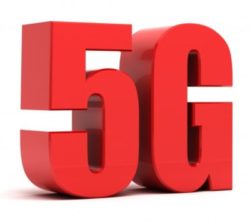As the first faster networks ramp up, tests on Verizon’s network in Chicago, IL and Sprint’s in Dallas, TX show faster download speeds are just the tip of the iceberg when it comes to 5G network offerings, according to CNET. Consistent speeds, wide coverage, and incredible peak speeds are also on the horizon.
So what are the results of this (very early) testing of 5G across concrete jungles?
Sprint claims victory in turning on a larger 5G network coverage area, 2,180 square miles serving 11.5 million people, but Verizon is still the largest U.S. network by population coverage.
Sprint’s 5G cities include Atlanta, Dallas-Fort Worth, Houston and Kansas City with Chicago, Los Angeles, New York City, Phoenix, and Washington poised to get 5G, “in the coming weeks.” Verizon’s 5G cities include Chicago and Minneapolis and should be in 30 markets, by the end of the year.
Verizon’s field tests were over 2x faster than Sprint’s peak speeds after field testing using the Speedtest.net benchmarking app and downloading apps, movies, and TV shows. Verizon came in at 1.3 Gbps downlink speeds while Sprint peak 5G speeds were 484 Mbps downlink.
When CNET tested download speeds of “real-world” applications like movies and TV shows, they used the Galaxy S10 5G and Galaxy S10 Plus devices with the Verizon network and the LG V50 and LG G8, with the Sprint network.
Since Verizon and Sprint use a different spectrum, Verizon’s mmWave spectrum provides fast speeds in a targeted area but can’t penetrate through cars or inside a workspace, while Sprint’s mid-band frequencies cover larger areas more consistently but are slower.
What does it all mean? Verizon has the upper hand when it comes to consistently fast 5G speeds when you can connect to the network. Sprint showed a slower-but-broader 5G coverage can still benefit with faster-than-4G downloads across the board, reported CNET.
CNET noted that the results of these two tests aren’t anywhere near a conclusion that either network is “better;” both will encounter challenges and growing pains, especially as more users stress the networks.
June 4, 2019





Reader Interactions